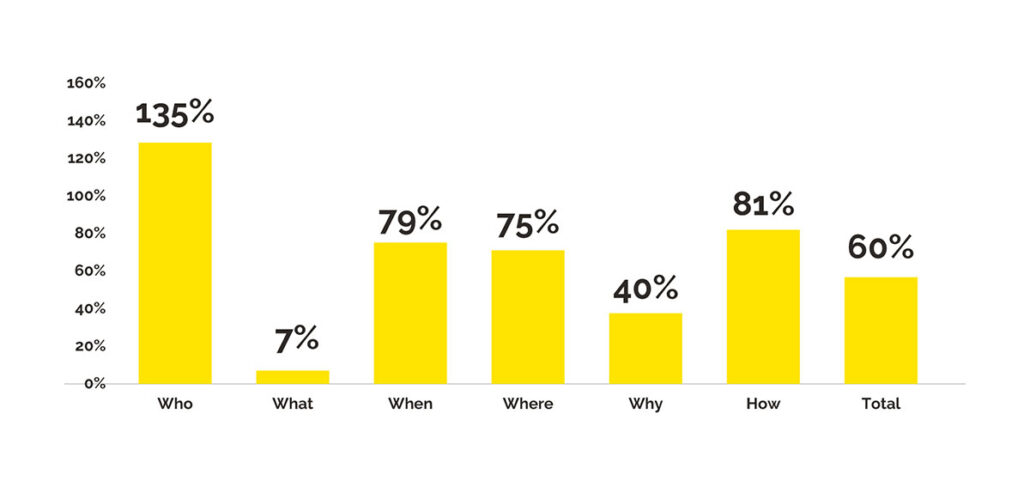How to optimise for keywords in voice
Voice search optimisation is all about the long-tail, answering questions and keeping it local
When it comes to voice, the most important (and admittedly obvious) thing to recognise is the difference between input information in a typed query and a spoken query. This marks a major shift in how people search and marketers must ensure their answers are the ones that are most likely to be presented.
Voice means the truncated three or four-word searches that make sense to Google, but we would never say to one another, are replaced by queries that are typically twice as long and flow more like natural language.
The key to optimising for keywords is twofold. Firstly, speech is natural and long form and so this brings in the long tail of keyword optimisation. Consumers are asking conversational questions of their voice assistant. Instead of typing in ‘pizza Manchester’ will instead ask something more like, ‘Hey Google, which place is best for pizza in Manchester?’
Secondly, when people talk to their voice assistant, they are generally making knowledge enquiries i.e. who, what, where, when and how questions.
In fact, according to SEO research, laid out in the table below, the total number of questions queries is up growing at 60% per year and the biggest annual growth area is ‘who’.
For brands, the ‘who’ ‘why’ and ‘which’ are questions which are likely to be those posed by consumers at the start of their research journey, whereas the ‘where’ and ‘when’ are towards the end of that journey when they are considering a purchase.
What questions are people asking in voice search
Once this long tail and question-led observation is taken on board, it is a good idea to get immersed in the types of questions people are asking around a particular brand’s industry or niche. AnswerThePublic is a very useful tool for this.
A query for an imaginary brand making or selling LCD televisions, for example, will bring up the most popular questions
This kind of insight can help an SEO expert get a hook on what the public wants to know and how they are phrasing their questions.
How should voice questions shape content marketing strategy?
Many of the questions will naturally lend themselves to a Frequently Asked Questions (FAQ) page, where relevant queries are given a short, snappy answer.
However, marketers can also identify keywords that fit into their brand’s main selling points for content on their own website and beyond. With the LCD example, if gamers are an important target market, a blog post may seek to bring out the main questions asked around which console works best with an LCD television and, of course, answer them. For example, a blog post might start with the line: “Have you and your friends ever spent the night arguing about, ‘What is the best LCD television for the PlayStation?’”
More general blogs and marketing content could also look at ‘which’ questions if, for example, the brand in question can back up that it is a leader in any of the functions one would expect for a television, such as ‘Which LCD has the best picture quality?’ or ‘Which LCD is the best according to reviews?’ and so on.
Voice search is local search
Of all the questions people ask of their voice assistant, it is the ‘where’ and ‘when’ questions that brands will be most interested in for turning awareness into customer transactions.
Other enquiries will serve as research but once prospective customers start asking ‘where’ and ‘when’ questions, they are giving a clear indication they are at the sharp end of the marketing funnel and on the verge of converting.
This makes it more essential than ever that brands do all they can to back up long keyword optimisation, based around questions consumers are asking, with good old-fashioned local information. Every store or consumer-facing location needs to be claimed through Google My Business to ensure it offers clients accurate and up-to-date information.
Throughout a website, and through content marketing beyond, brands need to optimise for local-based and ‘near me’ queries. Mobile users are three times more likely to search locally when they speak compared to when they type because adding a town name or ‘near me’ takes a moment to say but can add many keystrokes to a typed query.
The three main strategies for optimising, then, are focussing on the long-tail, listening to and responding to questions, and keeping it local.
The question is not “leisure centre” but rather “Hey Google, when’s Brighton swimming pool open” or “Where can we play a game of squash near here”.



